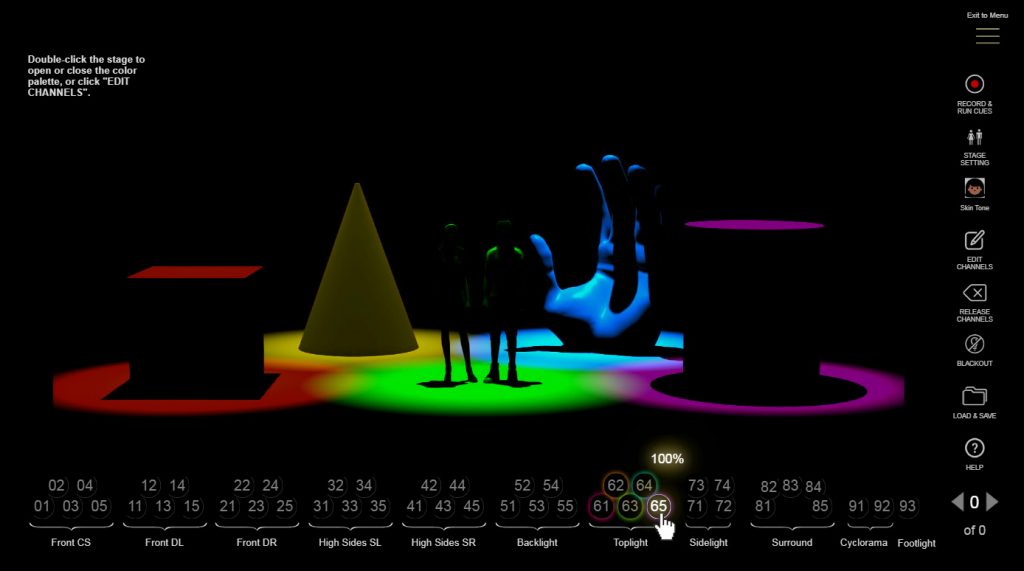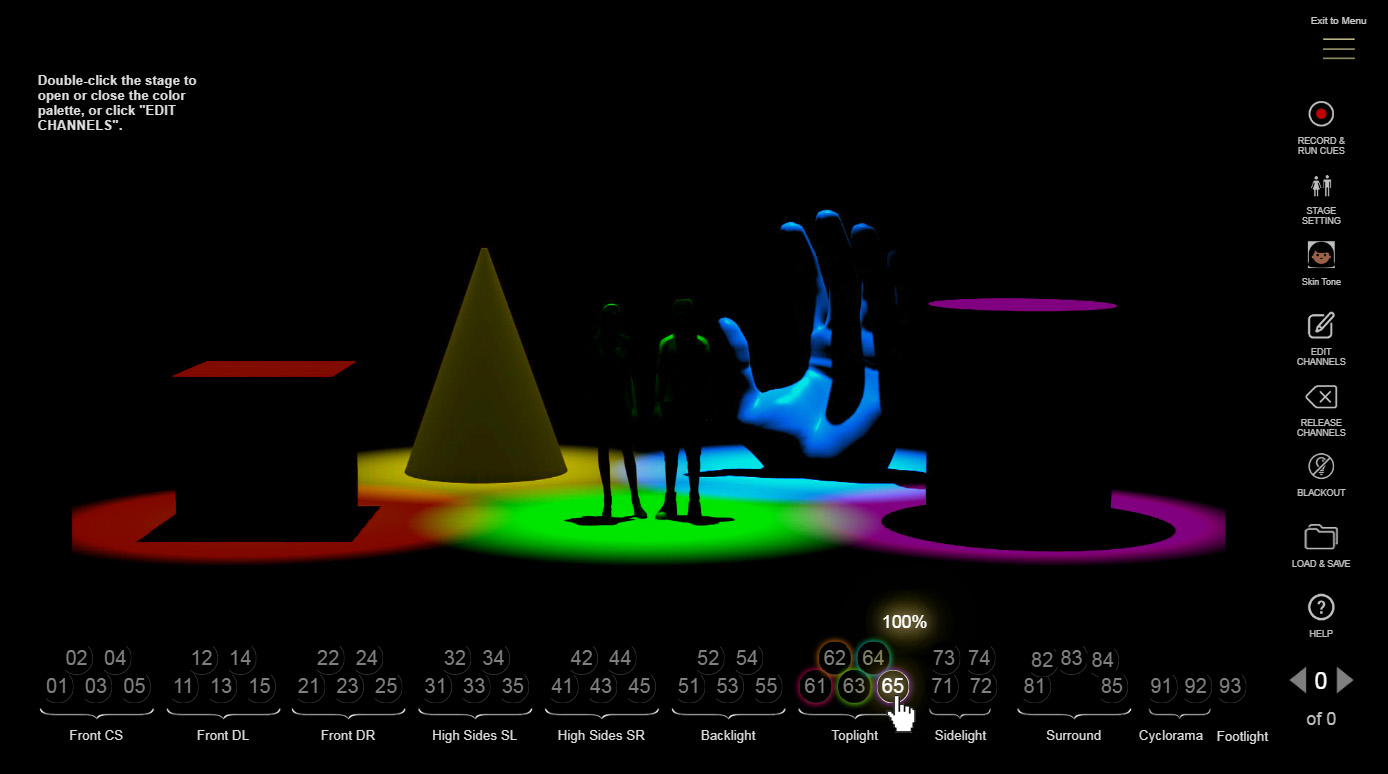The exercises below can be executed in any order. Different institutions, designers, and students can use these to serve their own learning agendas.

Creating Your Own Exercises
If you are creating your own exercise based on Cue Builder, you might like to have a groundplan for one or more of the included settings. The settings can be used readily for a variety of shows. I believe they have been used for A Midsummer Night’s Dream and She Kills Monsters, but there could be many more. A groundplan for each setting is available here: https://scenicandlighting.com/groundplans/
You will find them in JPEG format, or AutoCAD.

Ready-Made Exercises
#1 Transition Cues with Music
There is a complete worksheet of cues to write here:
https://scenicandlighting.com/lightlabs/light-cue-transitions/
These are all short scene transitions with accompanying music.
#2 Understanding the Plot
- Explain the breakdown of numbers in this plot for channels.
- Is it easy to use and understand? Could there be a better way to number the lights?
- If we had more areas on stage, how could we number them differently?
- Is it better to number them from stage-left to stage-right, or the opposite? What about downstage to upstage? Some designers prefer one system over another. Why might that be?
- Write a sequence of 25 cues that lights up the areas in sequence, while following a very specific color order. Do not use the same channel twice
#3 Controlling Spaces
- Choose either “open stage with more actors” or “abstract shapes” as your stage environment.
- Write a series of cues that switch back and forth between areas on opposite sides of the stage.
- Make cues for these two areas that look the same in regard to color, texture, time of day, season, etc.
- Then do this again, but make one space an interior, and the other an exterior.
#4 Personal Music
- Choose a piece of music that speaks to you personally. Edit it down a little if you wish, depending on how much length you want to work with.
- Choose a stage environment that is appropriate for your music choice.
- Create a sequence of cues that reinforce the meaning of the music.
#5 Original Narrative
- Write a short play that makes use of one of the environments. It might involve the people on stage, or it might involve the objects. It could be narrated.
- Create a sequence of cues that reinforce the narrative you have created.
- This could be an exercise for two-person teams.
Precursor Video
This ten-minute video is an excellent lead-in to the Cue Builder lab.
